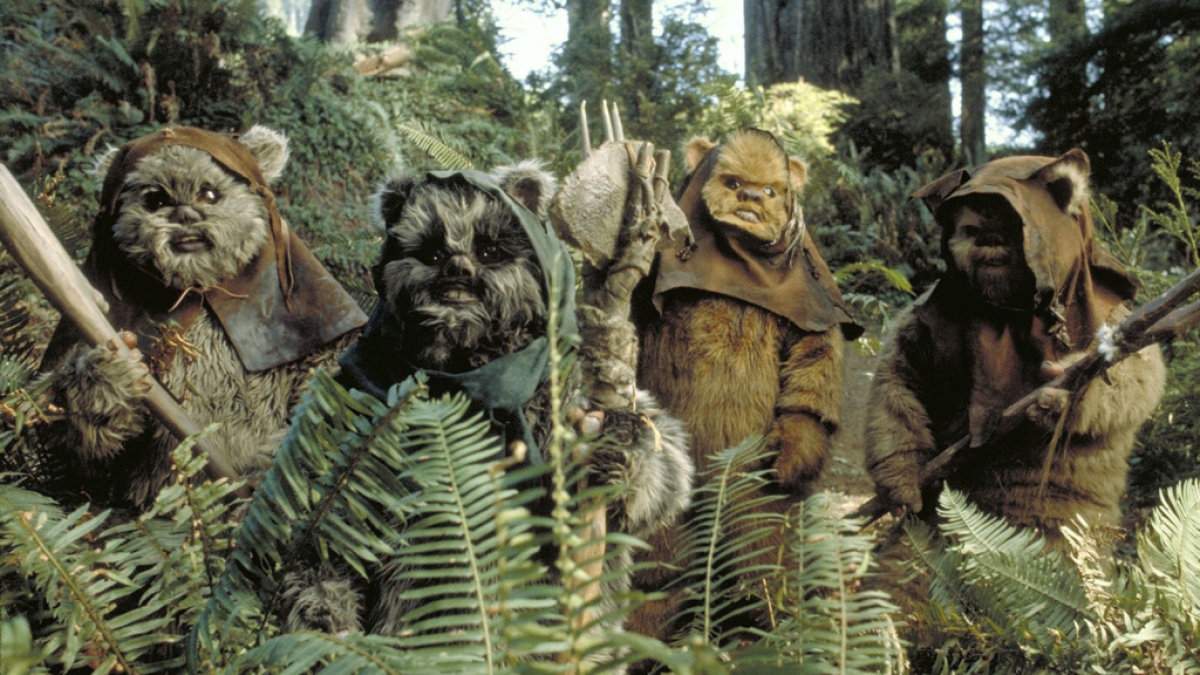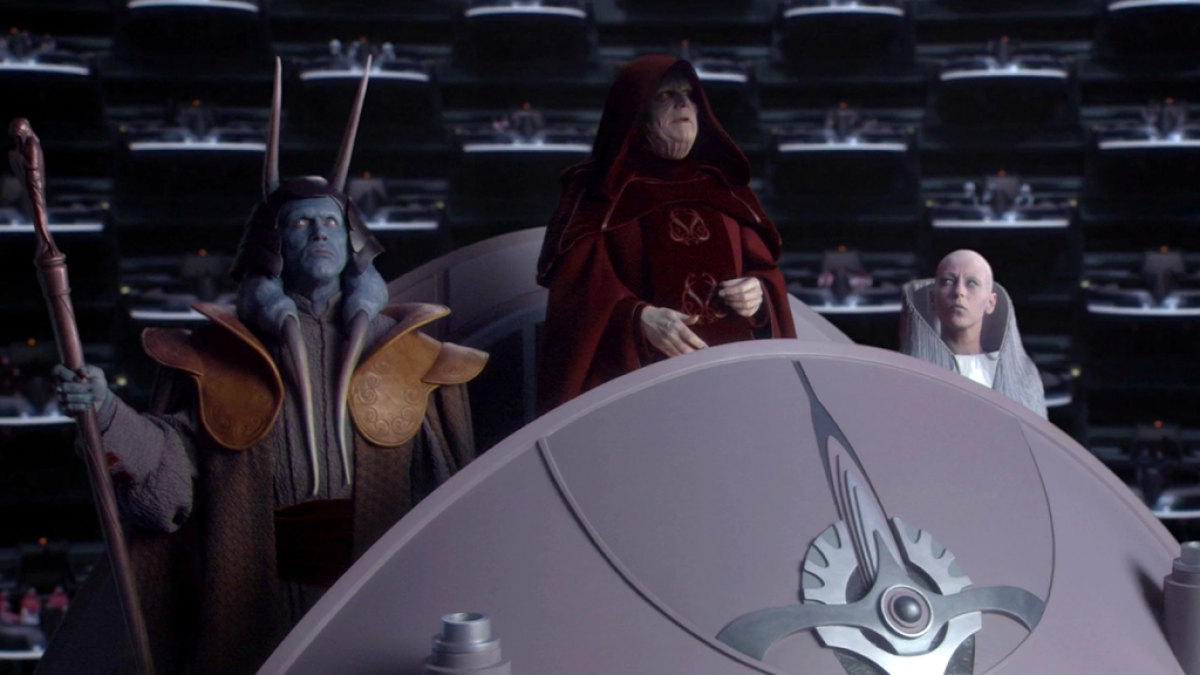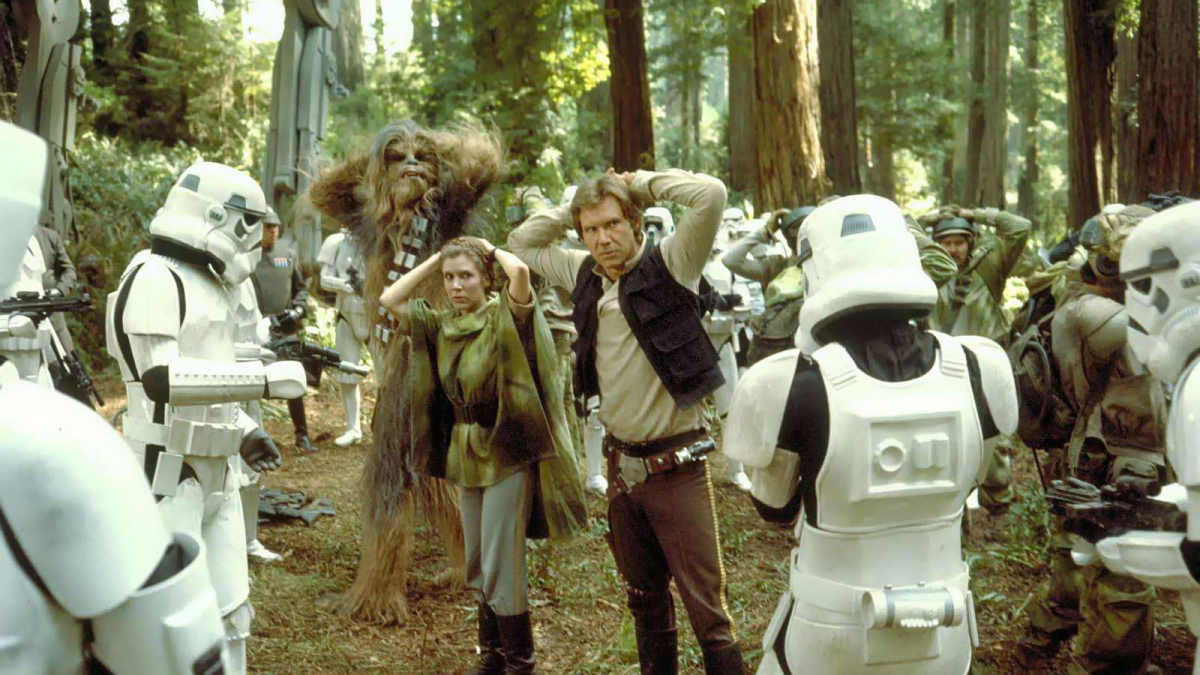While Star Wars‘ politics are a contentious issue, one thing is undeniable: the franchise has always been political. Indeed, Star Wars creator George Lucas originally envisioned the Rebellion/Empire conflict partly as a comment on the Vietnam War – and we’ve unpacked this allegory below.
Star Wars’ Vietnam War Allegory, Explained

Lucas’ staunch opposition to the Vietnam War cropped up in Star Wars as early as 1973. According to J.W. Rinzler’s Making Star Wars, a draft screenplay for Star Wars: A New Hope from that year identified the planet Aquillae and the Empire as stand-ins for North Vietnam and “America 10 years from now,” respectively.
Lucas ultimately cut Aquillae from A New Hope, but he and screenwriter Lawrence Kasdan later featured a clear allusion to the Vietnam War in 1983’s Star Wars: Return of the Jedi. As noted by numerous sources (including Lucas himself), Return of the Jedi‘s teddy bear-like Ewoks represent the Viet Cong. Notably, both forces are victorious despite the technological superiority of their opponents.
Related: Baylan Skoll’s Star Wars Journey Won’t End With Ahsoka
Star Wars‘ Vietnam War allegory isn’t limited to the original trilogy, either. Lucas also references the war and its politics in the prequels, particularly in his depiction of Emperor Palpatine’s rise to power. 2005’s Star Wars: Revenge of the Sith sees Palpatine transform the Republic into the Empire with the Senate’s backing – a development Lucas publicly acknowledged as a nod to the Nixon administration.
“[Star Wars] was really about the Vietnam War,” he said shortly before Revenge of the Sith‘s release. “And that was the period where Nixon was trying to run for a [second] term, which got me to thinking historically about how do democracies get turned into dictatorships? Because the democracies aren’t overthrown; they’re given away.”
George Lucas’ Other Star Wars Political Allegories

Lucas and the rest of the creative team behind Revenge of the Sith also noted the film’s other parallels with real-life events outside the Vietnam War. First and foremost, the third and final Star Wars prequel seemingly calls out the Bush administration’s post-9/11 policies, which Lucas and producer Rick McCallum chalked up to history repeating itself.
“We never thought of Bush ever becoming president, or then 9/11, the Patriot Act, war, weapons of mass destruction,” McCallum insisted in a 2005 interview. “Then suddenly you realize, ‘Oh, my God, there’s something happening that looks like we’re almost prescient.'”
“No matter who you look at in history, the story is always the same,” Lucas added. “That’s what’s eerie. It was a little eerie that things have developed the way they have.”
Related: The Kevin Feige Star Wars Film is Officially Not Happening Per Kevin Feige
Lucas didn’t restrict his real-world influences to the wars in Vietnam and Iraq, though. He also very clearly invokes World War II throughout the original and prequel Star Wars trilogies. The Imperial officers’ SS-like uniforms and the “stormtrooper” moniker of the Empire’s grunts are obvious references to Nazi Germany.
The Star Wars prequels contain even older historical cues. The Republic’s final days mirror those of the Roman Empire. What’s more, Lucas named the aggressor in this era’s Clone Wars the Confederacy of Independent Systems, after the American Civil War’s Confederacy. Does this make ostensibly genteel Sith Lord Count Dooku Robert E. Lee’s galaxy far, far away counterpart? It’s not exactly a stretch.
But at heart, Star Wars is a Vietnam War allegory above all else – and now you know why.






Published: Dec 18, 2023 07:49 am